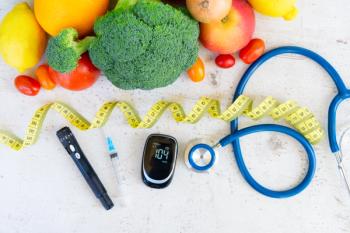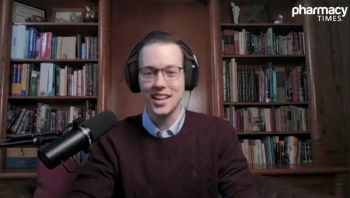
The Final 340B ADR Rule May Bring Pharmacies Closer to the Regulatory and Administrative Aspects of the 340B Program
Pharmacy Times® interviewed Emily Cook, a partner with McDermott Will & Emery, on the release of the final 340B Administrative Dispute Resolution (ADR) Rule and what it may mean for pharmacies.
Pharmacy Times® interviewed Emily Cook, a partner with McDermott Will & Emery, on the release of the final 340B Administrative Dispute Resolution (ADR) Rule and what it may mean for pharmacies.
Alana Hippensteele: So, Emily, what does the release of this 340B Administrative Dispute Resolution Rule, or ADR rule, by the HHS mean for how 340B disputes will be handled going forward? Do you have any thoughts on that?
Emily Cook: Sure, the administrative dispute resolution rule provides a process for finality in dispute resolution. Currently in the 340B program, there are processes through which both HHS and drug manufacturers, as well as covered entities, can bring claims that either covered entities or drug manufacturers are not complying with the 340B program rules when those claims are brought either by covered entities or by manufacturers currently, there is a process to getting to a semi-end point where there is a determination of whether there is some form of non-compliance, but there is no way to actually finalize and take action on that determination. And there is currently no clear path to appealing those decisions or bringing them into a court for judicial resolution. So, this administrative dispute resolution process allows for the parties to have a forum in which they can bring finality to their dispute at an administrative level, and then have a decision that they could take to a court for further appeal.
Alana Hippensteele: Right, right. So, what does the release of this rule mean for pharmacies in particular?
Emily Cook: So, pharmacies in general are not direct participants in the 340B program. They do contract typically with covered entities to dispense 340B drugs on their behalf. And in that process, they can be involved in disputes between covered entities and drug manufacturers, particularly when it relates to data they may have about drugs that have been purchased or that have been dispensed. Because of the new formality that this process the administrative dispute resolution process will add to the 340B program, I think pharmacies can expect to be getting additional data requests to have additional questions asked of them and be brought into those discussions in a more formal capacity when there is a dispute and particularly when that dispute is being heard in front of the administrative dispute panel.
Alana Hippensteele: Right, right. The final rule notes that covered entities and drug manufacturers are expected to engage in “good faith” efforts to resolve disputes before bringing them to the ADR panel. What do “good faith” efforts mean in this context, and how might this definition be applied?
Emily Cook: Good faith is not a clearly defined term, and it really does depend on the specific facts and circumstances. In general and historically, HRSA has taken that “good faith” expectation to mean that the parties in a collaborative and collegial manner work to address disputes before they bring them to HRSA. So, the expectation would be that the parties would attempt to resolve it amongst themselves. The dispute resolution panel is really intended for those disputes that the parties cannot work out amongst themselves through appropriate interactions, and again those collaborative efforts to resolve the issue between themselves.
Alana Hippensteele: Right. How is the final ADR rule different from the proposed rule that we actually previously discussed?
Emily Cook: Sure. So, given the time that had elapsed, one would anticipate that there might be quite a lot of changes between the proposed rule and the final rule. But there really are not significant changes of the level that we might have expected. The primary changes really fall into 4 categories.
The first one is that there is more structure to the individuals who will sit on the panel. The proposed rule indicated that it would be individuals from HHS, but was a little bit squishy as to the specific agencies from within HHS that those individuals would come from and how they would be selected. The final rule does clearly establish that there will be a panel that is comprised of 6 individuals: 2 each from HRSA, CMS, and the HHS office of general counsel. And then for each dispute that is heard, there will be 3 of those selected, one from each agency: So one HRSA, one CMS, and one office of general counsel representative on each panel that will hear these.
In addition, there is a change in the threshold of the dispute that can be brought before the panel. So the proposed rule did not provide a clear jurisdictional threshold for the types of disputes that could be heard, and the final rule establishes a 25,000 damages threshold. So, in order to bring a dispute before the panel, there must be a dispute of at least 25,000 between the parties, and presumably that is intended to ensure that only those significant disputes that again cannot be resolved amongst the parties are heard before the panel. It is their time and resources that are required to hear these disputes, and so they want to make sure that there are really meaningful disputes that are coming before the panel.
The third change is that there is significantly more procedural rules attached to the panel. The proposed rule set forth the panel, but did not provide really clear rules as to how the panel would hear the disputes. The final rule applies both the federal rules of civil procedures—certain federal rules of civil procedure, not full-blown court civil rules of our federal rules of civil procedure, but the rules that are applicable to this type of dispute, as well as the federal rules of evidence. So, as there is significantly more structure, and that I think will help the parties understand what to expect when they're before the panel.
And then finally, the final rule establishes that the decisions of the panel will be both precidential and binding on the parties, and that in particular is of particular interest to the 340B community, and I would think pharmacies as well, because there is a question of whether this could create a back door to rule making in the 340B program. There are not many areas where the federal government has what's known as notice and comment rulemaking authority. Much of the 340B program is overseen through guidance that does not have the force of law, but now there is a question of whether the decisions of this panel being precidential could be viewed in some ways as having the same authority as rules, and it will be interesting to see how that unfolds, and I would say it is not unexpected that there may be future litigation over that component.
Alana Hippensteele: Okay, yeah. So, you mentioned a bit about the correlation to pharmacies. What would you say is the significance of these changes from the proposed rule in terms of impact on pharmacies?
Emily Cook: I think that it really is that last component that I mentioned: the precidential nature of these decisions. The 340B program to date, while there has been guidance, the use of that guidance, the specificity of that guidance, the extent to which that guidance is uniformly followed has varied significantly. And with this new panel, both the opportunity to bring disputes that could be litigated in court and build precedent, as well as the potential for these decisions to again have that presidential authority, I think will bring, depending on your views, clarity, rigidity, or a formality to the 340B program that we have not previously seen. And again I think that will, for pharmacies, create potentially more administrative burdens, potentially more restrictions and contracts, and again I think more requests for data, more involvement in disputes, and really bringing them in closer to the heart of some of the regulatory and administrative aspects of operationalizing the program.
Alana Hippensteele: Great. And do you have any closing thoughts on this topic?
Emily Cook: So, I think that that interesting thought is what comes next. The rule effective date is January 13th, and it will be interesting to see what that means. In order for these panels to actually operate, they have to be constituted, and some additional process and procedure will almost certainly need to be put in place. So, it will be interesting to see the timeframe in which individuals are actually appointed to the panels, and the panels can be constituted and when we start to first hear these disputes, and what the process looks like. So, I think it will be an interesting several months. I can't say that this will necessarily be a top priority of the Biden administration either, so it may be a little bit of a waiting game to see when they actually get the administrative dispute resolution process up and running.
Alana Hippensteele: Right, right. Thank you so much for taking the time to speak with me today, Emily. Now let’s hear from some of our other MJH Life Sciences brands on their latest headlines.
Newsletter
Stay informed on drug updates, treatment guidelines, and pharmacy practice trends—subscribe to Pharmacy Times for weekly clinical insights.


















































































































































































































